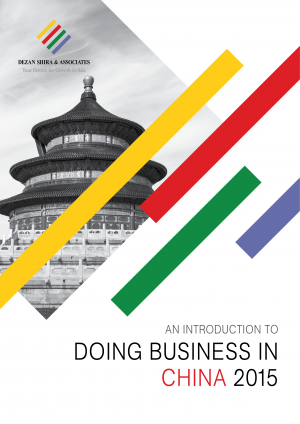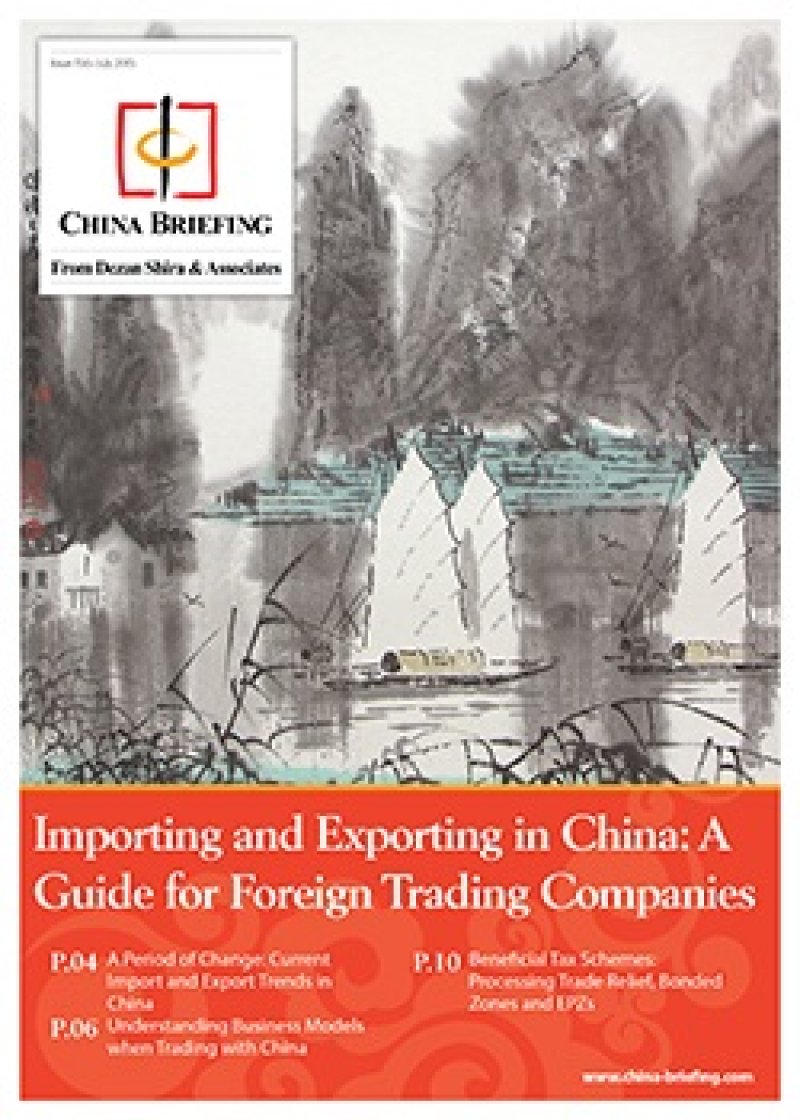Navigating China’s FTZs: Market Access, Tax Systems and Registration Procedures, Part 2
By Dezan Shira & Associates
Editors: Nathan Wakelin-King and Qian Zhou
The following is the second of a two-part article taken from our January-February magazine, A Guide to China’s Free Trade Zones. The first part can be found here.
Faster Administrative and Registration Procedures
Relaxed Incorporation Requirements
FTZ policies cancel the minimum registration capital of RMB 30,000 for limited liability companies; the RMB 100,000 minimum for single shareholder companies; and the RMB 5 million minimum for joint stock companies.
Previous provisions on first-time capital contribution amounts and ratios for company shareholders at the time of incorporation are cancelled, as are the provisions on the ratio of capital contribution amounts to registered capital and the provisions on capital contribution deadlines for full payment by company shareholders.
One Stop Application Processing
In order to cut down on bureaucracy related time costs, FTZs have “one-stop application processing platforms” for company establishment. An online application is made through the relevant FTZ website, and then the business is checked against the updated “negative list”. Later, all application materials will be submitted and handled through the industry and commerce authority (AIC) in the Zone.
All the relevant licenses and certificates (including the business license, enterprise code certificate, and tax registration certificate) will be issued altogether by the AIC. This means applicants may obtain all necessary documents for company establishment in one place, contrasting with outside the zone where applicants must move between different authorities for the issuance of the different varieties of paperwork.
Competitive Tax Environment
When the Shanghai FTZ was initially announced, investors were hopeful of a more preferential tax environment, with some predicting a CIT rate of as low as 15 percent. In reality, however, this was never likely to occur, as the Shanghai FTZ was designed more as a testing ground for new reforms than as a zone for preferential policies.
That said, there are still various tax incentives that exist for certain qualified individuals and enterprises throughout the four FTZs. For example, Qianhai and Hengqin of the Guangdong FTZ, and Pingtan of the Fujian FTZ, provide special tax incentives to qualified businesses based on their respective functions.
For foreigners who are categorized as high-end talents/talents in short supply, and for those who work for one successive year or more in a Qianhai registered enterprise, the Shenzhen government will subsidize the IIT paid on wages which exceed 15 percent of taxable salary income
For Hong Kong and Macao permanent residents working in Hengqin, the portion of IIT paid which is in excess of the Hong Kong/ Macao IIT on such income can be refunded
Cross-border RMB Cash Pooling
In early 2014, China launched a pilot program to enable cross-border RMB cash pooling in the Shanghai FTZ. This program was welcomed by domestic and foreign invested MNCs, as it provides more channels to recoup RMB back to mainland China while simultaneously centralizing treasury and cash flows, thus achieving financial cost savings. In November 2014, a detailed guidance on cross-border RMB cash pooling by MNCs nationwide was issued by the People’s Bank of China (PBOC).
Compared to the national version, cross-border RMB cash pooling policies in the FTZs still have their advantages. For better understanding, we present a full chart in our online magazine. Note that in the Fujian and Guangdong FTZs there are presently no specific rules for cross-border RMB cash pooling.
![]() RELATED: Business Advisory Services from Dezan Shira & Associates
RELATED: Business Advisory Services from Dezan Shira & Associates
Forex Cash Pooling
China launched its foreign exchange cash pooling pilots as early as 2012, implemented among 73 MNCs in selected provinces. With the experience gained from the pilot programs, the State Administration of Foreign Exchange (SAFE) issued the Huifa [2014] No.23, (hereinafter Circular No,23) on April 18, 2014, extending the pilot programs nationwide from June, 2014. On August 5, 2015, SAFE released the revised version of Circular No.23, i.e. Huifa [2015] No.36 (hereinafter Circular No.36), further lowering the threshold and simplifying the procedures for foreign exchange cash pooling.
Unlike the significant difference between the national and FTZ versions on cross-border RMB cash pooling, setting up a foreign exchange cash pool within or outside the FTZs is mostly similar, with the exception that there are lower requirements on international balance of payments. According to Circular No.36, to be qualified for applying for foreign exchange cash pooling, the MNC’s international balance of payments in the preceding year must exceed US$100 million. However, as stipulated in the “Detailed Implementation Rules for Further Promoting Pilot Forex Administration Reform in China (Shanghai) Pilot Free Trade Zone”, released in December, 2015, this requirement was lowered in Shanghai to US$ 50 million. The Tianjin and Fujian FTZs released similar rules on December 18 and December 22, respectively, and the Guangdong FTZ is expected to do the same later this year.
 This article is an excerpt from the January and February issue of China Briefing Magazine, titled “A Guide to China’s Free Trade Zones.” In this issue of China Briefing magazine, we examine China’s four Free Trade Zones and discuss the differences and strengths that exist in each of them. We begin by providing an introduction to the FTZs, and then take an in-depth look at the market access conditions, registration procedures and tax environments of each. Finally, we highlight some of the key considerations that foreign companies should be aware of when choosing an FTZ to invest in. This article is an excerpt from the January and February issue of China Briefing Magazine, titled “A Guide to China’s Free Trade Zones.” In this issue of China Briefing magazine, we examine China’s four Free Trade Zones and discuss the differences and strengths that exist in each of them. We begin by providing an introduction to the FTZs, and then take an in-depth look at the market access conditions, registration procedures and tax environments of each. Finally, we highlight some of the key considerations that foreign companies should be aware of when choosing an FTZ to invest in. |
![]()
 An Introduction to Doing Business in China 2015
An Introduction to Doing Business in China 2015
Doing Business in China 2015 is designed to introduce the fundamentals of investing in China. Compiled by the professionals at Dezan Shira & Associates, this comprehensive guide is ideal not only for businesses looking to enter the Chinese market, but also for companies that already have a presence here and want to keep up-to-date with the most recent and relevant policy changes.
 Selling, Sourcing and E-Commerce in China 2016 (First Edition)
Selling, Sourcing and E-Commerce in China 2016 (First Edition)
This guide, produced in collaboration with the experts at Dezan Shira & Associates, provides a comprehensive analysis of all these aspects of commerce in China. It discusses how foreign companies can best go about sourcing products from China; how foreign retailers can set up operations on the ground to sell directly to the country’s massive consumer class; and finally details how foreign enterprises can access China’s lucrative yet ostensibly complex e-commerce market.
Importing and Exporting in China: a Guide for Trading Companies
In this issue of China Briefing, we discuss the latest import and export trends in China, and analyze the ways in which a foreign company in China can properly prepare for the import/export process. With import taxes and duties adding a significant cost burden, we explain how this system works in China, and highlight some of the tax incentives that the Chinese government has put in place to help stimulate trade.
- Previous Article Making the Cut: New Measures to Qualify as a High-tech Enterprise in China
- Next Article An Introduction to Doing Business in Hong Kong 2016 – New Report from Dezan Shira & Associates










